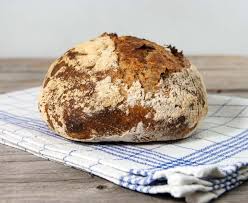Sourdough bread kefir grains doesn’t have to follow a standard recipe, but usually, a recipe is marked by hydration of the dough. The higher the hydration, usually crumbs or bread pores will get bigger, but it means that the dough will also be more difficult to handle. For beginners, you are usually recommended to keep my hydration at around 70%. Hydration here follows the baker’s percentage which makes flour 100%, and all other ingredients follow. So for example for a 70% hydration recipe, it means that the amount of water is 70% of the total flour. It usually takes a week or more to make a starter with enough oomph to make reasonable bread. You will know it is ready to go when it can double the size in under eight hours feeding. Or if you are not sure about starting one, you could always get a sourdough starter that available in the market.

There are plenty of sourdough recipes online to get you started, but here are some key tips for success. Try a variety of recipes using a variety of flour (common ones including wheat, rye, and spelling). You will finally find something that best suits your taste. Prove your dough overnight in the fridge. The result will be more flavorsome bread. Remember to bring the mixture to room temperature and make sure the dough is doubled before baking. Need gluten-free sourdough? It’s possible to use a gluten-free starter and ingredients for those with celiac disease.
Although the process can seem complicated at first, this long process makes the sourdough pretty artform. If that doesn’t work, continue, try something else next time. You might even consider joining a sourdough class online to perfect your skills. So why not experiment with making your sourdough starter this week – it might just be the most fun and rewarding housemate of them all.






